Seconded By: Gilles Cargueray,
This project is a personal meditation on the wildfires in my home country of Australia that connects its colonial past with its precarious climate future.
Through a series of landscapes and animal specimen images, this work is my attempt at coming to terms with the environmental and personal impact of the recent wildfires in New South Wales, which were the largest ever recorded in the country. Over a three-month period, these fires devastated a land mass larger than the size of mainland England, killing or harming three billion animals and causing a level of environmental destruction described by one commentator as omnicide. As these fires continue to grow in frequency and severity due to escalating global temperatures, the project raises the question of how colonialism and climate change are linked.
Using a variety of techniques, I have transformed the images to convey emotional resonance. These reimagined landscapes act as visual metaphors for both the visible destruction caused by wildfires and my own emotional response -fear, anger, and sorrow in the face of such loss. The gestures made with my brush reflect the broader theme of human interaction with the natural world, echoing our attempts to impose order on forces beyond our control. Through this process, I aim to embed a personal perspective into the work—acknowledging the devastation while also searching for moments of beauty and resilience in these transformed environments.
In other instances, I juxtapose these landscapes with images of preserved specimens, sourced from zoological museum archives in the UK, of either indigenous animals native to the region, or animals that were introduced to Australia only to become rampant pests. These juxtapositions point towards the often-overlooked historical links between 19th century biology, scientific exhibitions, and colonial logic, underscoring the interconnections between current ecological disasters and Australia’s colonial history. By highlighting the country’s scientific-rationalist approach to nature, characterized by the relentless pursuit of control and dominance, the project prompts viewers to confront the enduring legacy of colonialism and its role in exacerbating the environmental challenges facing Australia today.

A Lost Place: Home
This image was taken near my parent’s home, in Callala Bay (jerrinja and wandi wandian country), Australia. This town was relatively unaffected by the wildfires, but its residents were evacuated multiple times during that period and the threat of another wildfire remains constant.
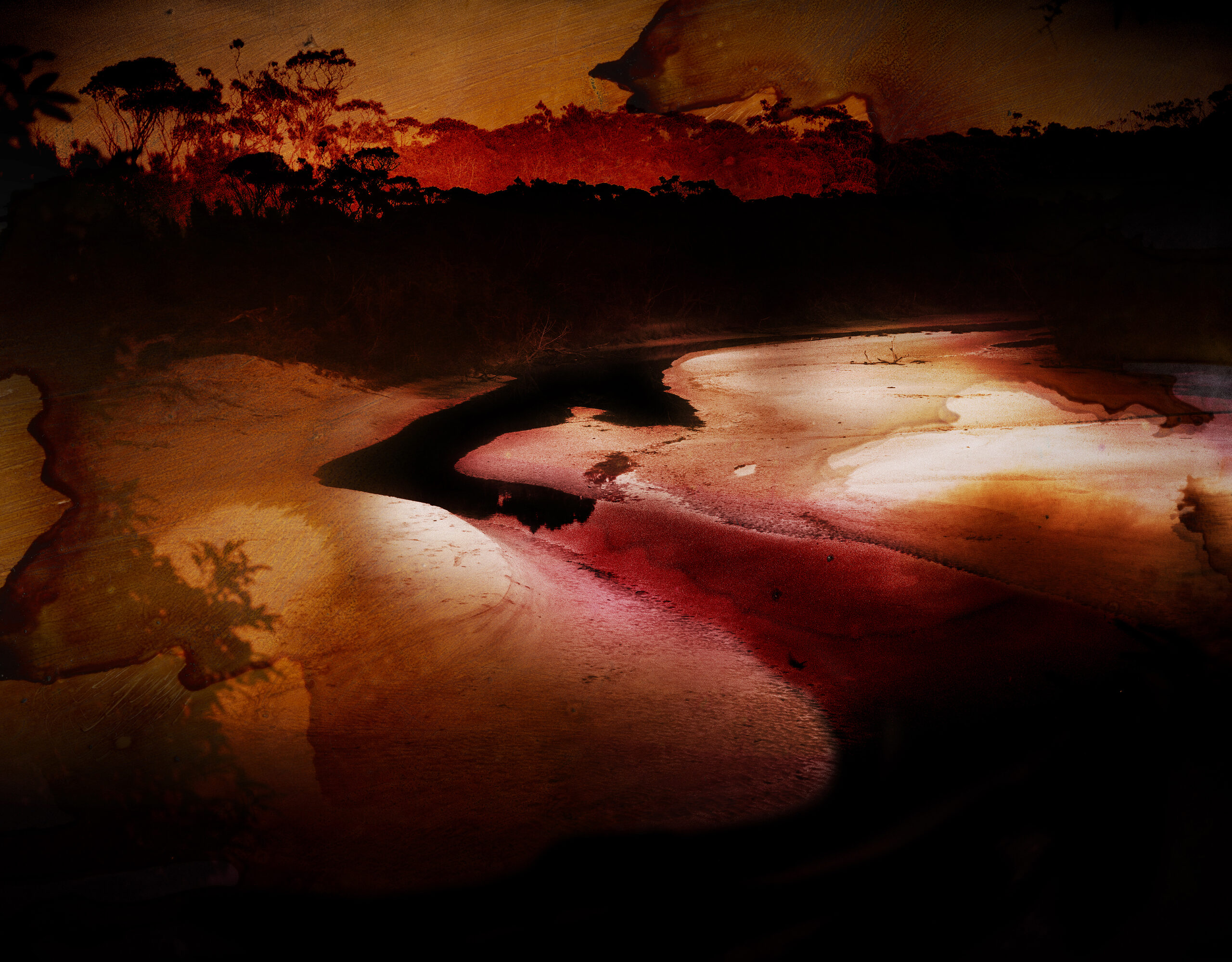
A Lost Place~: Wowly Creek
A scene of Wowly Creek, near my family home in Callala Bay (jerrinja and wandi wandian Country), Australia. The photograph was painted with inks.
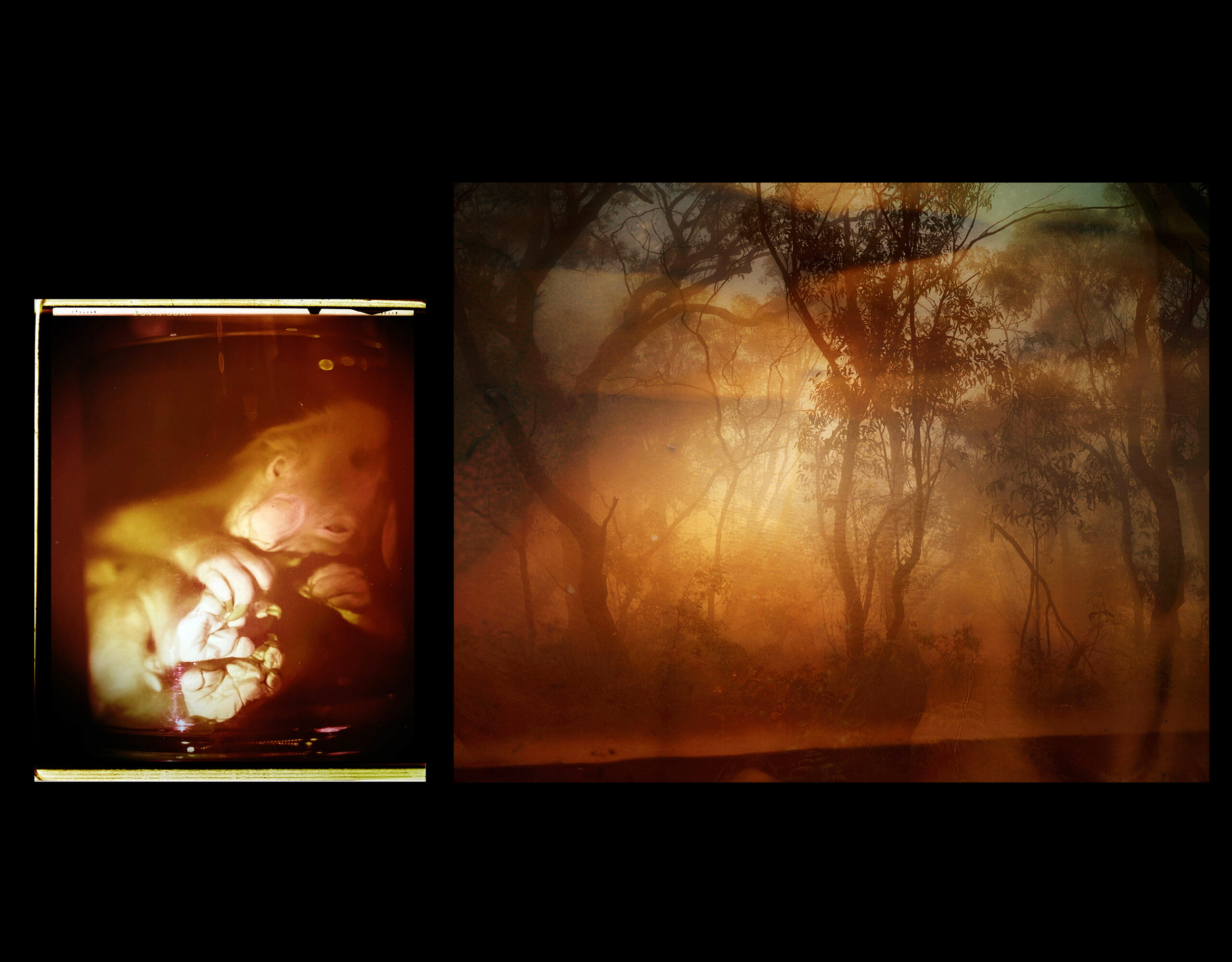
A Lost Place: Koala and landscape
(Left) Preserved specimen of a Koala joey (Phascolarctos cinereus). This specimen was transferred from the Huxley collection at Imperial College in the 1980s. The fluid has not been tested but is likely IMS. UCL Grant Museum of Zoology, London UK. The image was made using a large format camera and then hand printed in the colour darkroom. (Right) A landscape of the Royal National Park (dharawal country), Australia.

A Lost Place: Wiradjuri country
Landscape near the my childhood home in Wagga Wagga (Wiradjuri country), Australia. I painted the photograph with inks and paint, and then scratched through the paint to reveal the layers below.
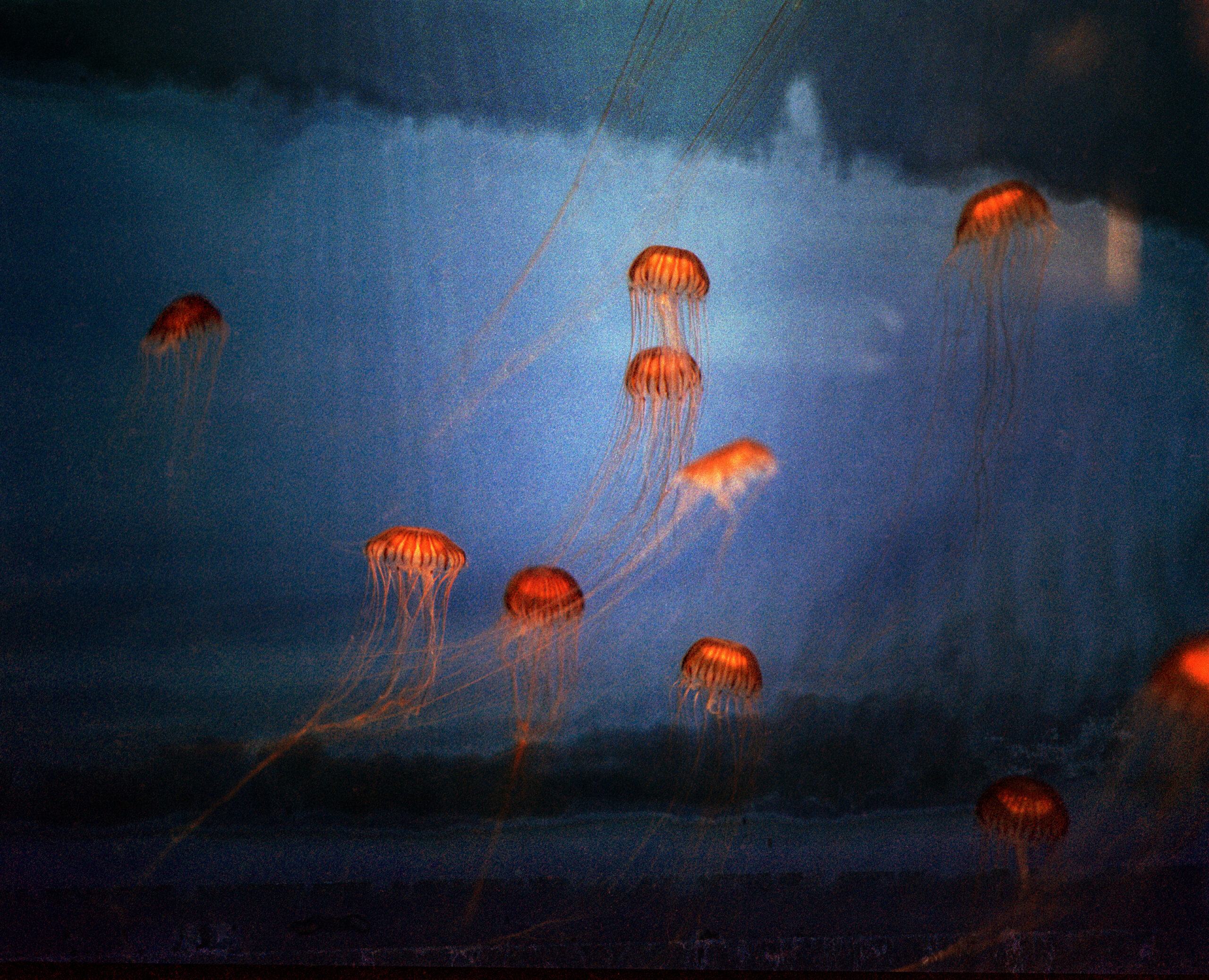
A Lost Place: Pacific sea nettle Jellyfish
Pacific sea nettle Jellyfish. These Jellyfish have been found off the coast of Australia and are also kept in British Museum collections. The Horniman Museum and Gardens, London UK.
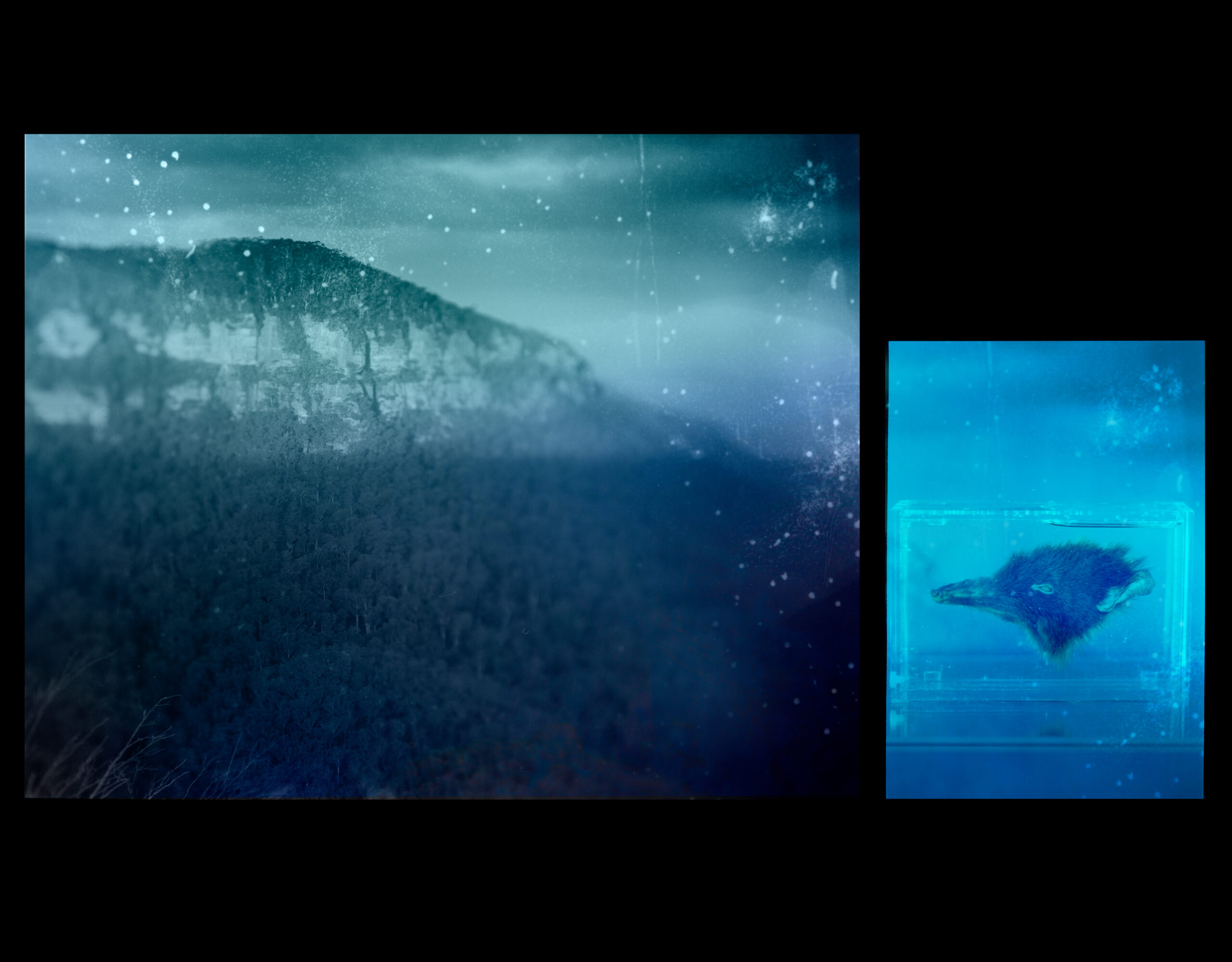
A Lost Place: Imagined landscape and head of a Long Nosed Bandicoot
(Left): An image of the Royal National Park, outside of Sydney (dharawal country), Australia. The photograph was painted and reworked with paint and inks. The Royal National Park is an immense area of wilderness on the outskirts of Sydney which is continually under threat of wildfires. Residents of Helensburgh, a town nearby, are forced to evacuate during these wildfires.
(Right): Specimen of a Long Nosed Bandicoot, Grant Museum of Zoology, London UK. The image was made using a large format camera and then hand printed in the colour darkroom.

A Lost Place: Wiradjuri country, Wagga Wagga
Wagga Wagga (wiradjuri country), Australia. The photograph has been painted with inks and then scratched. Wagga Wagga has faced both the threat of wildfires and also serious drought for years.
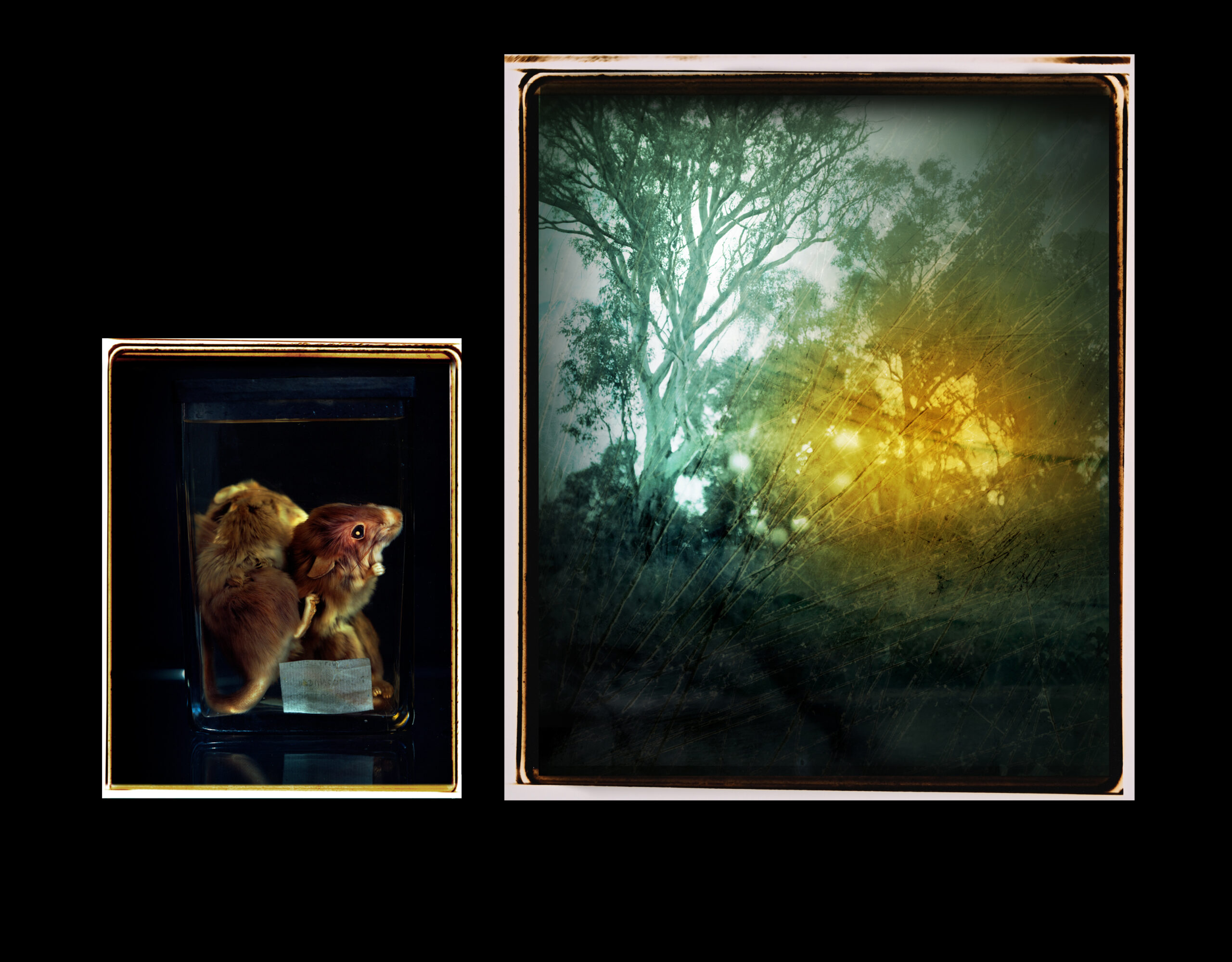
A Lost place: Crest tailed mulgara and landscape
Left: Crest tailed mulgara, animal specimen, Grant Museum of Zoology, London UK. The image was made using a large format camera and then hand printed in the colour darkroom. (Right):Wagga Wagga (wiradjuri country), Australia. The photograph has been painted with inks and the negative scratched. Wagga Wagga has faced both the threat of wildfires and also serious drought for years.
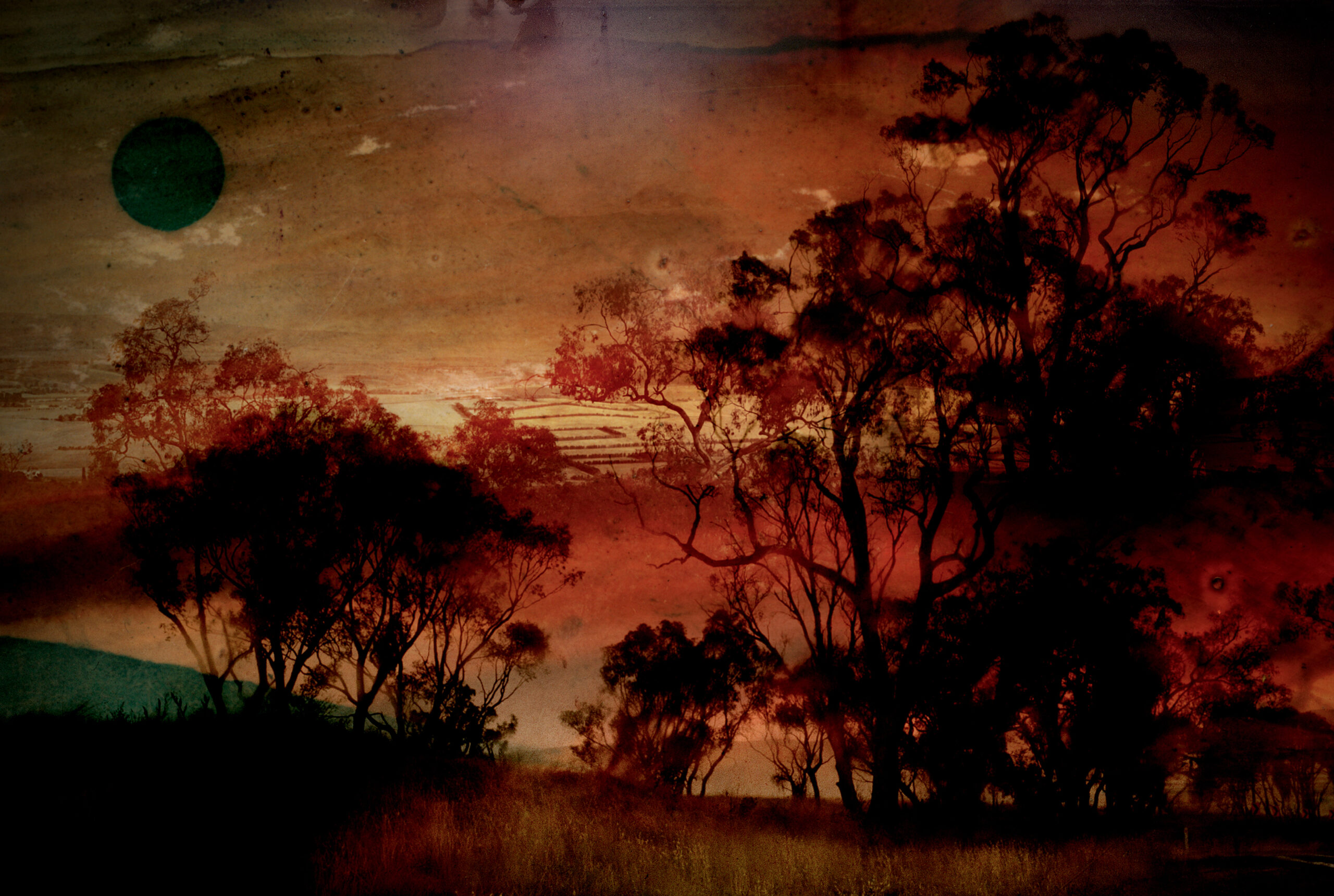
A Lost place: Wiradjuri country, Bathurst
Bathurst (wiradjuri country), Australia. The photograph has been painted with inks. Bathurst has faced both the threat of wildfires and serious drought for years.
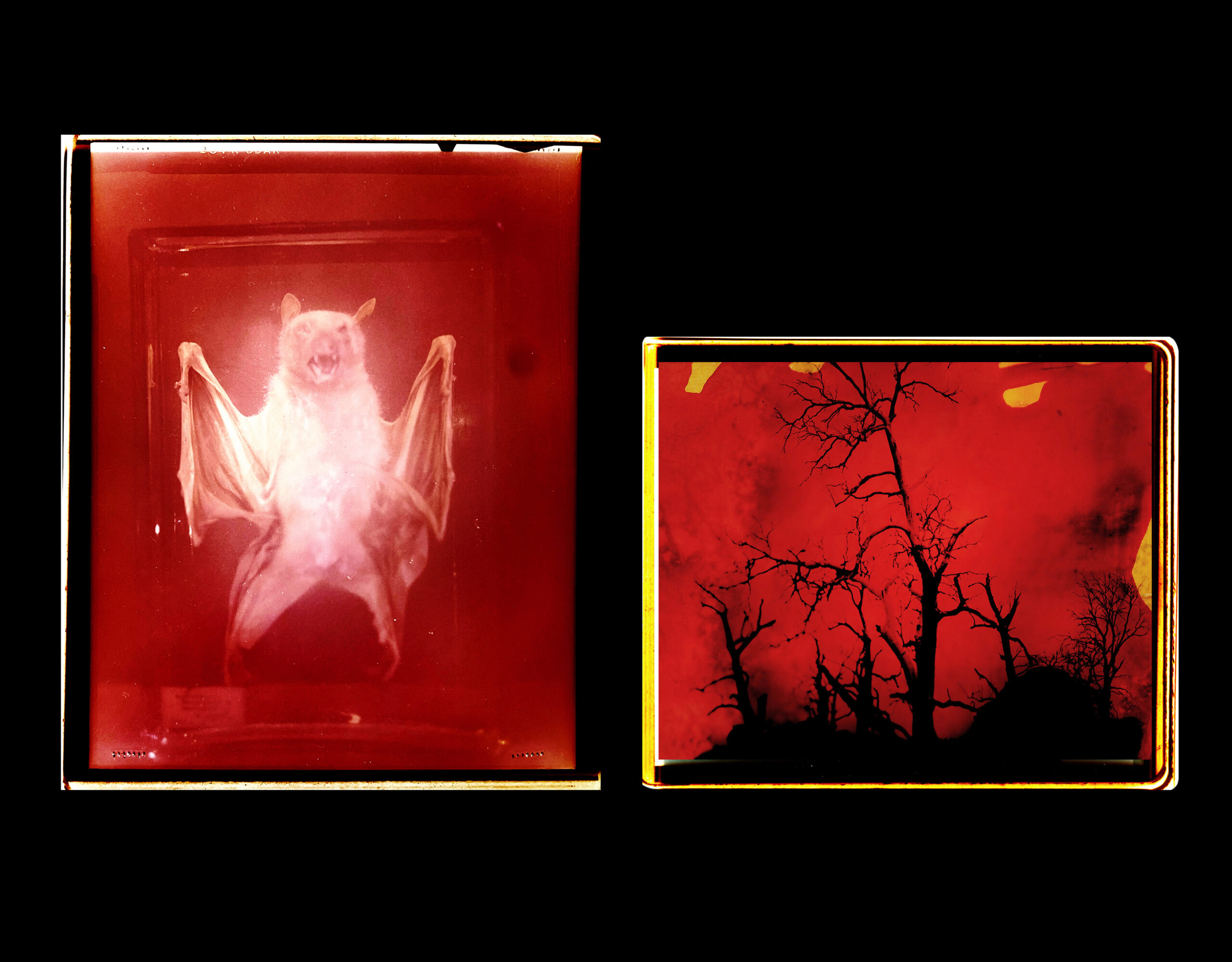
A Lost place: Bat and burnt landscape
(Left) Preserved specimen of a Bat (Flying fox), UCL Grant Museum of Zoology, London UK. The image was made using a large format camera and then hand printed in the colour darkroom.
(Right) A landscape of Bathurst (Wiradjuri Country), Australia. This photograph was reworked by painting on the surface of the print with inks and other paints.